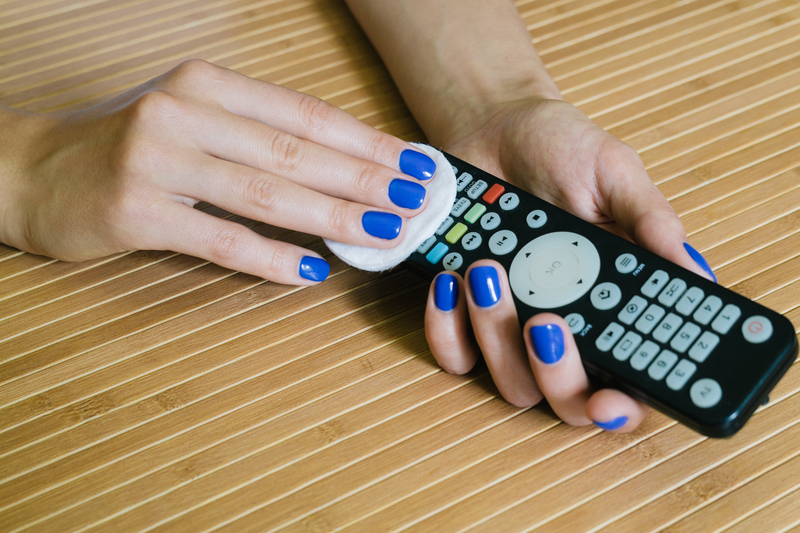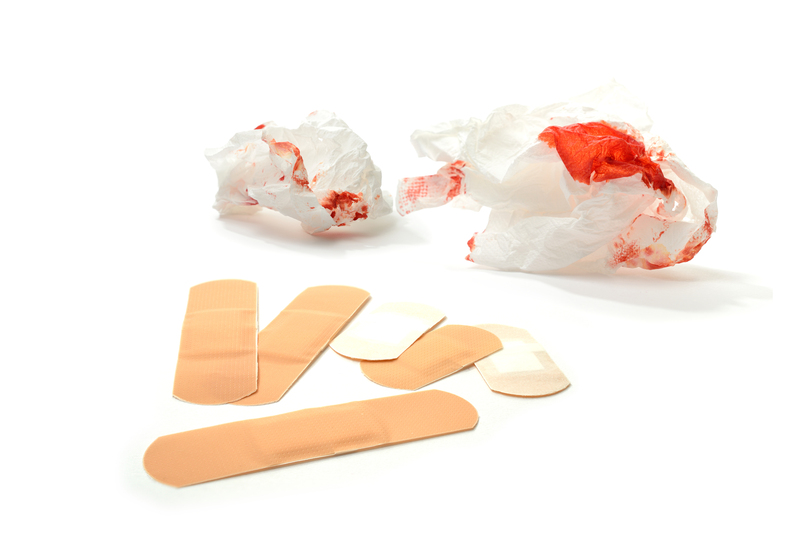Leave No Trace: Tenants' Guide to End of Tenancy Cleaning
Posted on 03/09/2025
Leave No Trace: Tenants' Guide to End of Tenancy Cleaning
Moving out of a rented property can be both exciting and stressful. One of the most crucial aspects of this process is making sure the property is left in pristine condition. This not only ensures a smoother handover but also secures the return of your deposit. In this comprehensive end of tenancy cleaning guide, we'll walk you through every step, providing tenants with the knowledge, tips, and checklists needed for a spotless exit. Let's learn how to leave no trace when you move!
Understanding End of Tenancy Cleaning
Many tenants underestimate the importance of end of lease cleaning. Landlords and letting agents conduct detailed inspections, and they expect the property to be returned in its original condition. Failing to do so may result in deductions from your deposit or even disputes.
What Is End of Tenancy Cleaning?
End of tenancy cleaning is a deep-cleaning process performed before vacating a rented property. It involves cleaning every nook and cranny, removing all dirt, stains, and leaving the place as good as new, so the property is ready for the next tenant.
Why Is End of Tenancy Cleaning Important?
- Deposit Recovery: Most agreements stipulate that the property must be clean for the full deposit to be returned.
- Legal Obligations: Fulfilling your cleaning duties prevents legal disputes with landlords or letting agents.
- Reputation: A well-departed property ensures positive references for future rentals.
- Respect: Leaving the home clean is a sign of respect to both the landlord and the next tenant.

End of Tenancy Cleaning Checklist: Room by Room Guide
To guarantee a thorough move-out cleaning, it's best to approach the task systematically by cleaning room by room. Here's a detailed checklist to guide you.
1. Kitchen
- Oven and hob: Remove all racks and soak them, then scrub the oven interior, hob rings, and controls free from grease and stains.
- Fridge and freezer: Defrost, empty, and wipe down surfaces inside and out. Leave the door open to prevent mould.
- Cupboards and drawers: Clean out crumbs, stains, and wipe all surfaces inside and outside.
- Sinks and taps: Remove limescale, polish, and ensure there are no blockages.
- Floors: Sweep and mop thoroughly. Don't neglect corners and edges!
- Small appliances: Clean kettles, toasters, microwave, and washing machine inside and out.
- Tiles and splashbacks: Remove grease and polish for a spotless finish.
2. Bathrooms
- Toilets: Scrub inside and out, paying attention to the base and behind the toilet.
- Sink and taps: Remove limescale and polish taps to a gleaming finish.
- Showers and bathtubs: Remove soap scum, hair, and limescale from tiles, screens, and grout.
- Mirrors: Polish with a streak-free cleaner.
- Floors: Mop, vacuum, and disinfect as needed.
- Extractor fans: Dust and ensure proper function.
3. Living Areas
- Dusting: Surfaces, skirting boards, shelves, and baseboards should be dusted and wiped.
- Windows: Clean glass, sills, and frames inside and, if accessible, outside.
- Carpets and floors: Vacuum, mop, or steam-clean as required.
- Furniture: Clean, vacuum, or polish, depending on material (don't forget under cushions!).
- Curtains and blinds: Dust or wash if possible.
- Light fittings and switches: Wipe clean and free of dust or stains.
4. Bedrooms
- Wardrobes and drawers: Empty, dust, and wipe down inside and out.
- Floors: Vacuum and mop, making sure to get into corners and under the bed.
- Windows: Clean inside and out where possible.
- Beds: Dust frames and vacuum both sides of the mattress if kept in property.
5. Hallways and Entryways
- Floors: Vacuum, sweep, and mop.
- Doors and handles: Clean and disinfect.
- Storage spaces: Empty, dust, and clean.
Commonly Missed Areas in End of Lease Cleaning
Even the most diligent tenants can overlook some spots during their end of tenancy cleaning. Pay special attention to:
- Skirting boards and corners
- Behind and under furniture
- Light switches and plug sockets
- Heating radiators (including behind)
- Extractor fans and air vents
- Cobwebs on ceilings
- Mould and mildew in damp areas
- Wall marks (spot clean with gentle detergent)
DIY vs Professional End of Tenancy Cleaning
Deciding whether to tackle cleaning yourself or hire a professional end of tenancy cleaning service depends on your budget, schedule, and the property's condition.
When Should I Clean Myself?
- Budget constraints: Doing your own cleaning is cheaper, though time-consuming.
- Smaller properties: Studios or one-bed flats can usually be handled solo.
- Confidence: If you have the right cleaning products and equipment, DIY is feasible.
When Is It Better to Book Professional Cleaners?
- Large or heavily soiled homes: Professionals tackle big jobs quickly and efficiently.
- Tight schedules: If you're juggling work, moving, and family, pros save precious time.
- Carpet, upholstery or oven cleaning: Specialist equipment guarantees deep cleaning, often required by landlords.
- Guaranteed results: Most cleaning companies provide a receipt or certificate for the landlord as proof of professional cleaning.
If you choose a professional service, research local options, read reviews, and get a written quote. Verify that the cleaning company's checklist matches your landlord's or agency's expectations.
Top Tips for End of Tenancy Cleaning Success
- Start Early: Give yourself enough time by spreading cleaning tasks over a few days or weeks.
- Gather Supplies: Stock up on all necessary cleaning products and tools (don't forget rubber gloves, scrubbing brushes, stain removers, and microfiber cloths).
- Work From Top to Bottom: Dust and clean high areas first, then floors last to catch all debris.
- Document Your Work: Take dated photos before and after cleaning for your records.
- Empty the Property First: Cleaning is easier once the property is clear of personal belongings.
- Repair Any Minor Damages: Fill nail holes, replace light bulbs, and check for draughts or leaks.
- Consult the Inventory: Compare the property's condition with the check-in inventory report for full compliance.
How to Deal with Deposit Disputes Over Cleaning
If a landlord claims deductions for cleaning after you've left, don't panic. Here's what to do:
- Request Evidence: Ask for specific details and photographs supporting the landlord's claim.
- Provide Your Own Evidence: Submit your before-and-after photos and receipts for professional cleaning (if used).
- Refer to Inventory: Highlight discrepancies between move-in and move-out conditions as noted in the inventory.
- Negotiate: Open dialogue often resolves issues without formal proceedings.
- Deposit Protection Scheme: If unresolved, escalate the dispute to the tenancy deposit scheme, where a neutral adjudicator will review the case.
End of Tenancy Cleaning FAQs
When Should I Carry Out the Cleaning?
Ideally, cleaning should be the very last task after you've moved everything out. This avoids dirt or mess being brought back into cleaned areas.
Can My Landlord Force Me to Hire a Professional Cleaner?
No, but the property must meet professional standards. If you choose to do it yourself, your landlord may still require proof that standards have been met.
What Happens If I Don't Clean the Property?
Your landlord can deduct the cost of cleaning from your deposit, sometimes at higher-than-market rates. Avoid this by being thorough or hiring professionals.
How Long Does End of Lease Cleaning Take?
It depends on the size and condition of the property - a studio may take a few hours, a three-bedroom house could take a full day or longer.

Key Takeaways for a Successful End of Tenancy Cleaning
- Plan ahead: Don't leave cleaning until the last minute.
- Be thorough: Refer to checklists and address every part of the property, no matter how minor.
- Document everything: Protect yourself from unfair deductions by taking photos and keeping receipts.
- Communicate: If cleaning standards are disputed, stay polite, provide evidence, and use deposit schemes if necessary.
Conclusion: Leave No Trace Behind
End of tenancy cleaning is your last responsibility as a tenant, but also your best opportunity to secure a full deposit return and a glowing reference for your rental future. Approach the task systematically, use professional help if needed, and always keep documentation. By following this end of tenancy cleaning guide, you can move out with confidence--and leave no trace.
Good luck with your move!




